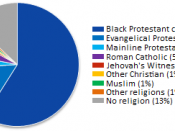Advocacy Against Homelessness
Social workers spend much of their time negotiating to resolve disputes between clients and their environment. According to the U.S. Census an estimated 31 million Americans lived in an "official" state of poverty in 2000. Major urban center surveys reveal that roughly 20 % of the homeless hold down regular jobs, and that 40 % are families with children. The 2001 U.S. Mayors Conference report revealed data from 27 cities count of the nation's homeless population at 50 % African American, 12 % Latino, 2 % Native American, and 1 % Asian American. People of color represent the majority of the homeless in the nation. Advocating for affordable fair market rent for the working poor in America is a form of cause advocacy.
Soaring housing costs and tight rental markets confront low-income people nationwide. Federal minimum wage has remained at $5.15 since 1997. It is estimated that roughly 2.7
million Americans were working for minimum wage in 2000. Housing discrimination is difficult if not impossible to prove; however, a recent Fannie Mae National Housing Survey showed that 39 % of African Americans believe that they suffer from discrimination in obtaining mortgages "all or most of the time," but few formally file complaints (Talvi, 2002). In reality, there is a persistent and extensive gap between earnings at the low end of the wage scale and basic housing costs. Moreover rental rates are not going down and there is still a severe shortage of housing in combination with the growing high demand for housing." (Talvi, 2002, p. 25)
With the terrorist attacks of 9-11-01 and the recent annihilation resulting from Hurricane Katrina, unemployment rates among some the nation's people of color already living at or below
poverty level is displaced, homeless, and unemployed. Approximately 1.14 million affordable housing units...


